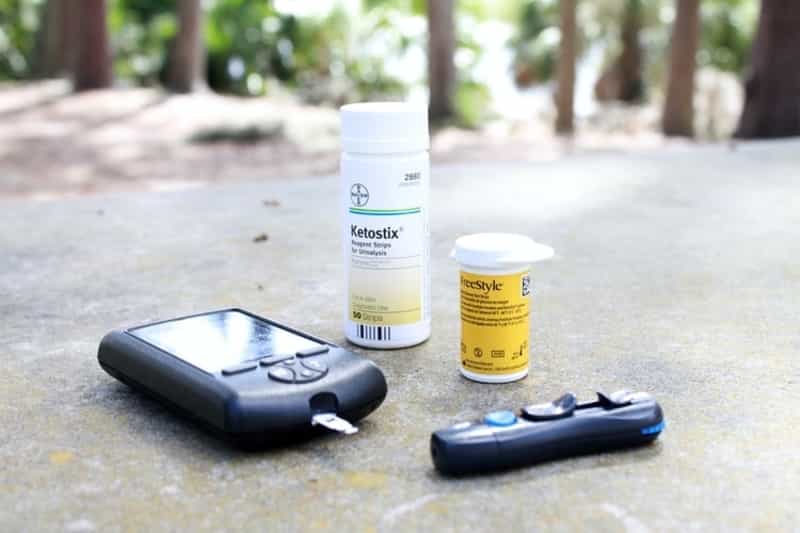As a parent, your topmost priority is to ensure that your child is happy and healthy. You want to shower them with all the comforts and luxuries of life. Also, you want to remove any obstacles that come their way.
It is, therefore, natural to feel disheartened if your child gets diagnosed with a serious life-long condition, such as type 1 diabetes. Also known as juvenile diabetes, it affects more than 187,000 children and adolescents in the U.S.
Understanding Type 1 Diabetes
Type 1 diabetes is an autoimmune disease in which the pancreas loses its ability to produce insulin, a hormone that helps cells absorb glucose. Consequently, excess glucose starts circulating in your bloodstream, thus resulting in higher blood sugar levels.
The inability to regulate glucose absorption could also result in hypoglycemia, a condition characterized by abnormally low blood sugar levels. Although type 1 diabetes can emerge at any age, it’s commonly diagnosed in children between the ages of 4 and 14 years.
If your child has type 1 diabetes, you’re far too familiar with the stress and anxiety of ensuring their wellbeing. It becomes even more difficult considering that scientists and medical researchers haven’t found a cure for the disease yet.
But the good news is that consulting an experienced doctor and following the right treatment plan can go a long way to ensure proper physical and emotional development for your child. Also, new-age tech innovations, including smart insulin pens and continuous glucose monitoring (CGM) devices, make it easier for you to take care of your child’s wellbeing even when they’re away.
Managing Type 1 Diabetes
In this blog, we’ve outlined a few useful tips to help your child cope with type 1 diabetes and live a fulfilling life. Let’s take a look.
1. Follow the Doctor’s Advice
Firstly, you must understand that the only way to treat type 1 diabetes is through insulin. Chances are your kid will have to take insulin multiple times throughout the day. However, the treatment will only work when you administer the right dose of insulin.
That’s why it is essential to consult your doctor and follow the prescribed dosage. If your child experiences any side effects or discomfort after taking an insulin injection, make sure you talk to your doctor before modifying their dosage.
They’ll also educate you on ways to monitor your child’s blood sugar levels and adjust the insulin dosage accordingly. Also, they’ll prescribe certain dietary and lifestyle changes to ensure that your child’s blood sugar levels stay within the prescribed limit.
It’s worth mentioning here that your child might be averse to the idea of regular insulin injections. In such cases, it might be a good idea to get an insulin pump or smart insulin pen to administer the right dose at the right time.
2. Make Monitoring a Priority
Depending on the severity of the disease and your kid’s overall lifestyle, they might be prone to frequent blood sugar level fluctuations. The last thing you’d want is for your child to experience hypoglycemia while they’re out on a school excursion.
Also, you might have to check their blood sugar levels at regular intervals to adjust their insulin intake. However, this shouldn’t prevent your child from spending time outdoors and participating in activities most kids their age would enjoy.
The only way to resolve this problem is to constantly monitor your child’s blood sugar levels. However, if your kid detests the idea of fingersticks or is scared of them, run-of-the-mill blood glucose meters will be of no avail.
In such a scenario, you should consider using a wearable CGM device like a Dexcom G6 sensor. It’s a discreet wearable sensor that can be inserted under the skin. Once inserted, it measures the blood sugar levels round-the-clock for up to 10 days.
The best part is that you can easily pair this sensor with your smartphone via an app and monitor your child’s blood sugar levels irrespective of where they are. The app can even alert you when the readings aren’t within the prescribed limits.
If you’re concerned about the cost of a CGM device, make sure you explore various Dexcom g6 sensor coupons available on GetDealRX. It’ll save you the pocket and eliminate the hassle of fingersticks. Also, it can go a long way to ensure that your kid enjoys a normal and happy childhood.
3. Focus on Your Wellbeing
When your child has a chronic disease, it’s easy to lose sight of things and become obsessed with their health and safety. This, in turn, could take a toll on your mental health. Needless to say, if you’re stressed and anxious, you might fail to provide your child with the right care and treatment.
That’s why it is crucial for you to focus on your physical and mental health as well. Don’t hesitate to talk to your spouse or friends about your feelings. Or you could even consider talking to a therapist to discuss your feelings and fears.
Raising a child with type 1 diabetes doesn’t have to be difficult and scary. Empower yourself with the latest tech innovations and accurate knowledge about the disease. Trust your doctor and follow their advice regarding medication, insulin, diet, and exercise.


